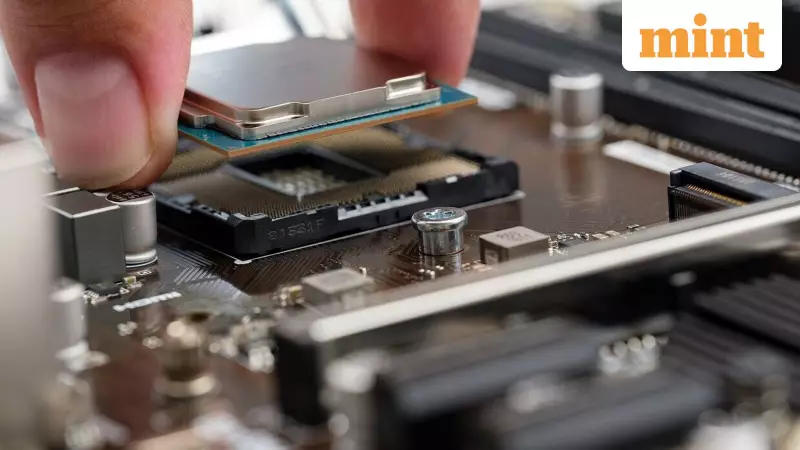
India's homegrown electronics manufacturing sector is undergoing a massive strategic transformation. Leading companies are aggressively moving beyond simple assembly work into high-value component production through acquisitions and joint ventures, aiming to solve the industry's persistent challenge of thin profit margins.
The Margin Expansion Drive
Despite recording significant revenue growth, most electronics manufacturing services (EMS) companies in India have been struggling with wafer-thin margins. This has prompted a strategic shift toward industrial electronics and component manufacturing, where volumes are lower but value-added margins are substantially higher.
Harshit Kapadia, vice-president at Elara Capital, explains: "Most companies will likely continue acquisitions as they look to establish presence in new markets. They're expanding margins beyond high-volume electronics assemblies by venturing into industrial electronics across sectors where value-added margins are much higher."
Major Players and Their Expansion Moves
Dixon Technologies: Betting Big on Display and Camera Modules
Noida-based Dixon Technologies, which reported ₹14,855 crore revenue in the September quarter, has been particularly aggressive in its expansion strategy. The company spent ₹803 crore on two acquisitions and a joint venture in Q2 alone, resulting in a significant margin improvement from 2.8% to 6.2% year-on-year.
The company invested ₹553 crore in a joint venture with China's Kunshan Q Tech Microelectronics for electronics components and another ₹250 crore for a 74% stake in a JV with Chongqing Yuhai for precision mobile phone and laptop components.
Dixon plans to invest ₹3,000 crore to manufacture display modules and camera modules, having already applied under the government's electronics components manufacturing scheme (ECMS). This scheme offers up to 50% capital expenditure subsidies with a total outlay of ₹22,919 crore in incentives.
Managing Director Atul Lall told analysts that smartphone camera module production could scale from 40 million units to 190-200 million units annually, generating revenues of ₹6,000-7,000 crore with sub-10% EBITDA margins within two to three years.
Syrma SGS: Strengthening Defence Electronics Capabilities
Syrma SGS, which manufactures laptops and electronics systems for railways and automobiles, spent ₹235 crore to acquire a 60% stake in Elcome Integrated Systems. The Navi Mumbai-based company specializes in electronics systems for defence and maritime clients.
Managing Director Jasbir Singh Gujral expects the acquisition to add ₹100 crore to revenue this fiscal year with margin accretion. The company recorded an operating margin of 7.8% in the July-September quarter, up from 6% a year ago.
Kaynes Technology: Backward Integration Push
Mysuru-based Kaynes Technology raised ₹1,575 crore from institutional investors and plans to spend about 10% of this on acquisitions. The company is focusing on backward integration into PCB manufacturing and parallel integration into OSAT (outsourced semiconductor assembly and test) and semiconductor packaging.
Whole-time Director Jairam Sampath stated that connecting PCB and OSAT capabilities will amplify innovation, operational efficiency, and product quality while yielding cost advantages. The company achieved a 16.7% operating margin in Q2 FY26, up from 14.8% a year earlier.
Amber Enterprises: Diversifying Beyond Consumer Durables
Amber Enterprises, traditionally a consumer durables maker, has aggressively forayed into electronic manufacturing. Electronics now account for a quarter of its ₹1,647 crore September quarter revenue.
The company spent ₹693 crore on two acquisitions: ₹431 crore for a 40% stake in Israeli electronics components maker Unitronics and ₹262 crore in Power-One Micro Systems. This diversification comes as the company's operating margin narrowed to 2.2% from 4.4% a year ago.
Industry Giants and Future Outlook
While these four companies represent a significant portion of India's electronics manufacturing, privately held Tata Electronics remains the industry giant with ₹66,602 crore revenue in FY25. Tata has announced a ₹91,000 crore foray into semiconductor manufacturing, building India's first commercial chip fab in Dholera, Gujarat.
Foxconn's India arm, Bharat FIH, announced a ₹15,000 crore expansion into electronics components manufacturing in May. Even engineering conglomerate L&T has announced plans to venture into electronics manufacturing through its chip design subsidiary, L&T Semiconductor.
Nirransh Jain, research analyst at BNP Paribas, notes that while overall market growth exists, cash flow generation weaknesses have pushed companies toward component manufacturing. "Joint ventures and acquisitions are thus a key part of EMS firms' strategies to improve client relationships and acquire requisite technologies," he said.
The strategic shifts have delivered impressive shareholder returns. Dixon has given investors a 29x return since its 2017 listing, while Amber returned 5.8x, Syrma 2.8x, and Kaynes an impressive 8.5x since their listings.
With the government projecting electronics production to reach ₹11 trillion by end-2025 and scale up to ₹44 trillion by 2030, India's electronics manufacturers are positioning themselves to capture a significant share of this growth through their newly rewired strategies.





